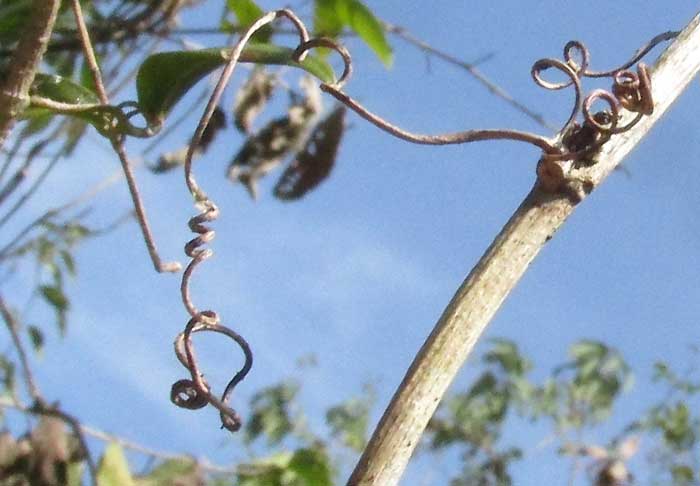Excerpts from Jim Conrad's
NATURALIST Newsletter
from the July 30, 2017 Newsletter issued from Rancho Regenesis in the woods ±4kms west of Ek Balam Ruins; elevation ~40m (~130 ft), N20.876°, W88.170°; north-central Yucatán, MÉXICO
ARRABIDAEA VINE
A fairly common woody vine issuing fair-sized flowers with rosy-colored, megaphone-shaped corollas these days is the one shown below:
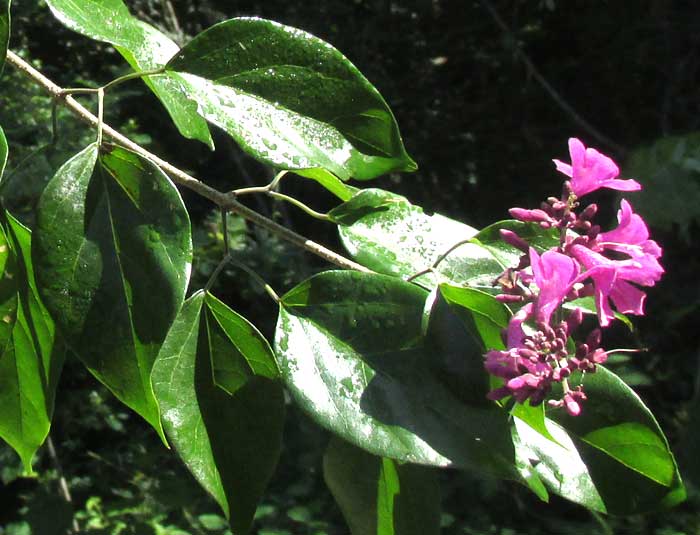
The vine's leaves are compound, sometimes consisting of two leaflets but more often three, like those shown below:
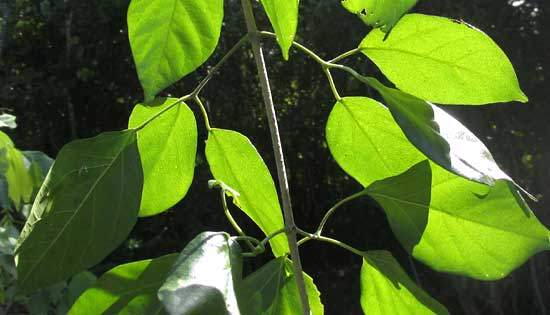
The flowers are bilaterally symmetrical, so there's only one way to cut across them that produces mirror images, as shown below:
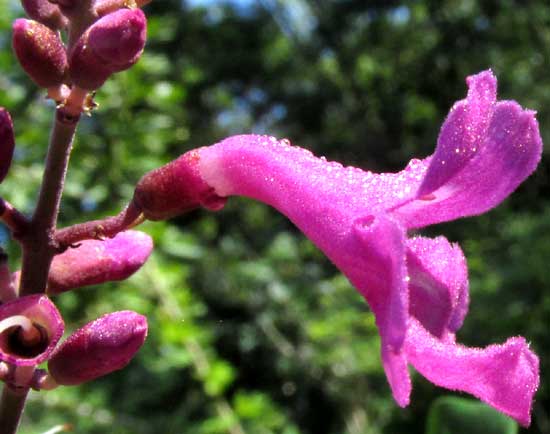
Looking at the flower from the front, you see it nicely designed for pollinators, shown below:
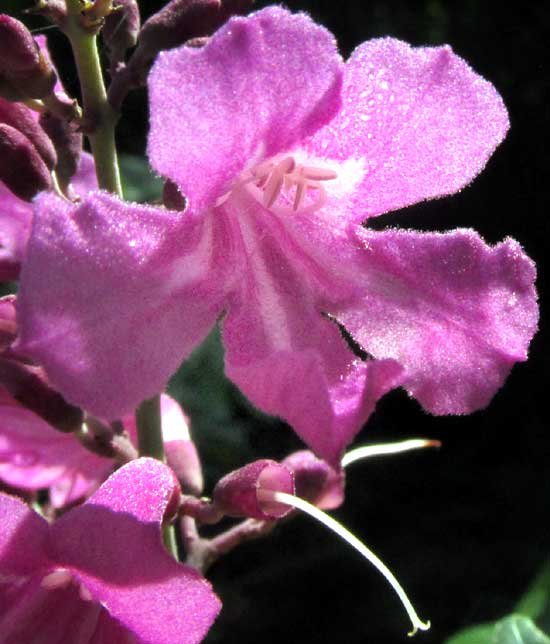
In that picture you can imagine a bee landing on the lower petal, seeing whitish stripes directing pollinators toward the nectar deep in the corolla tube's bottom, and as the bee enters, first pollen of other flowers is scraped from its back onto the flower's pale, Y-shaped stigma barely visible in the above picture, and then deeper into the tube anthers clustered at the top dump pollen onto the pollinator's back, to be carried to the next flower. Also in the above picture, at the bottom, notice the curving, slender items. Those are stigma-tipped stiles sticking from the flowers' calyxes after their corollas have fallen off.
The long styles tipped with their Y-shaped stigmas, persisting after the corollas have fallen, is a good field mark, as is a feature seen in the picture showing the flower from the side. There, notice how the corolla at its base diminishes in diameter a little, but not much, as it enters the urn-shaped calyx. Also, that the calyx itself is a little longer than wide. These obscure field marks help separate this species of woody vine from others in this area that are very similar.
We met one of those similar species back at Chichén Itzá, Arrabidaea podopogon, one of four Arrabidaea species listed for the Yucatan. Our present species is ARRABIDAEA FLORIBUNDA*, distributed from southern Mexico south to El Salvador, and then again in South America.
As with several woody vines in our area, local Maya artisans collect its pliable, woody stems for weaving baskets.
issued on February 24, 2020 from Tepakán, Yucatán, MÉXICO
ARRABIDA FRUITING
In the regenerating forest around the rancho's hut, slender, capsule-type fruits dangling from vines, as shown below, are fairly common
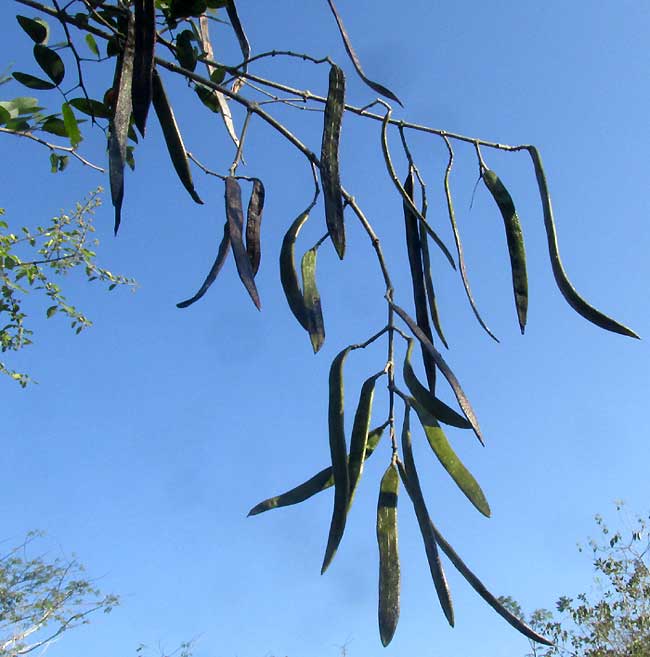
Even at this distance you can see that the flat side of each capsule bears a low, slender ridge running down its center. In the same woods another member of the Bignonia Family, the Cat's-claw Creeper, is producing similar clusters, with similar low ridges running down the flat faces, but the capsules are much longer, as that page shows. Below, you see the winged seeds, each of the two silvery items in the pod consisting of two seeds joined with one another along one side, with transparent, papery wings arising on the other side, helping with wind dispersal.
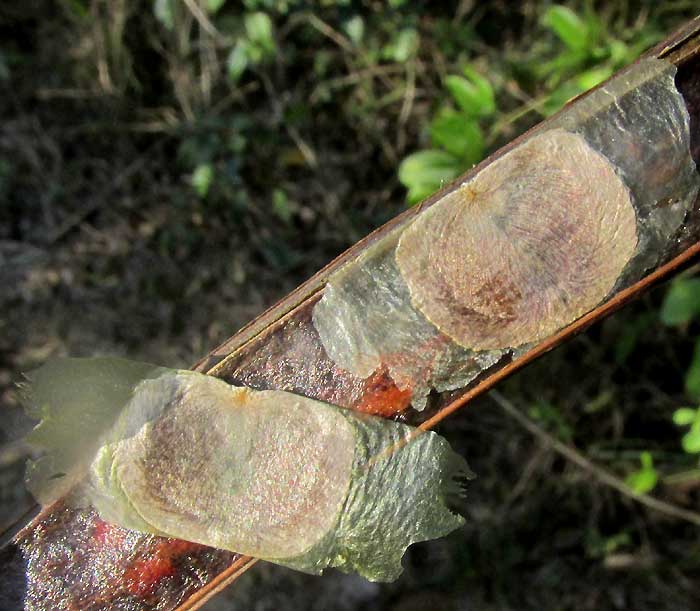
At this dry-season time, in our area, most vines bearing such capsules have lost most of their leaves. However, of those remaining, those lower down are often larger and broader than those at the tips of branches, as shown below:
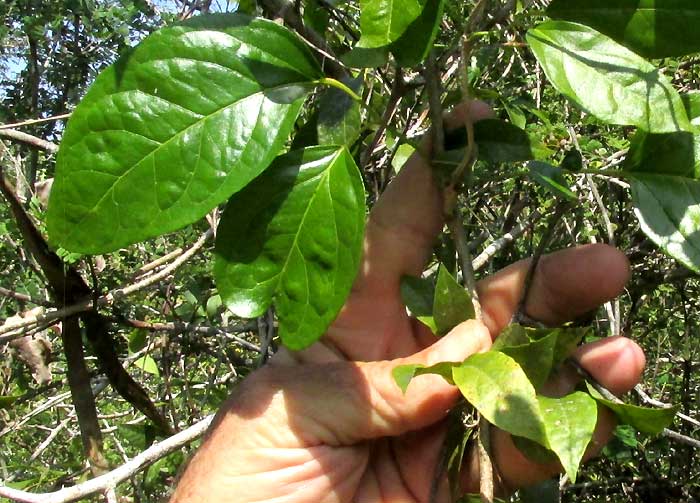
Stems bear unbranched tendrils, shown below:
